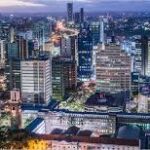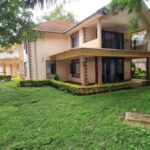Nairobi, the bustling capital city of Kenya, is a vibrant place composed of several excellent neighborhoods, each with its unique character, lifestyle, and charm. Understanding the different neighborhoods in Nairobi is essential for anyone looking to live, work, or visit this dynamic hub in East Africa. From upscale residential areas to busy commercial districts, Nairobi’s neighborhoods offer something for everyone, reflecting the city’s rich diversity and rapid urban development.
Upper-Class and Affluent Nairobi Neighborhoods
Karen and Langata
Among the most prestigious neighborhoods in Nairobi, Karen stands out as an affluent suburb that attracts both locals and expatriates. Named after the famous Danish writer Karen Blixen, this area is characterized by large plots, lush gardens, and its proximity to Nairobi National Park. The neighborhoods along Langata Road offer residents a peaceful retreat from the hustle and bustle of the city while maintaining easy access to urban amenities.
Karen is home to numerous shopping facilities, international schools, and entertainment options, making it one of the most sought-after neighborhoods in Nairobi for families. The area’s closeness to the Giraffe Centre and the David Sheldrick Wildlife Trust further enhances its appeal, especially for nature enthusiasts who appreciate living in a place that combines urban comfort with natural conservation.
Runda and Muthaiga
Runda encompasses a selection of distinct Nairobi neighborhoods, offering modern residential options and gated communities. This area has become increasingly popular among young professionals and diplomats seeking sturdy living environments with aesthetic appeal. The infrastructure in Runda is comparable to that found in affluent areas of the United States, featuring well-maintained roads, reliable utilities, and modern amenities.
Muthaiga, one of Nairobi’s oldest upscale neighborhoods, retains its colonial-era charm while adapting to contemporary needs. The Muthaiga Country Club, established in 1913, serves as a social hub for residents of this elite area, maintaining traditions while embracing a modern lifestyle..
Central Business District and Commercial Nairobi Neighborhoods
Downtown Nairobi
The Central Business District (CBD) is the economic heart of Nairobi, where trade, finance, and government operations come together. This area illustrates the city’s transformation from a colonial railway depot into a modern African metropolis. The neighborhoods surrounding the CBD, such as River Road and Tom Mboya Street, are bustling with business activity throughout the day.
These key neighborhoods in Nairobi offer a mix of street vendors, local markets, stylish retail stores, and corporate headquarters. The diversity in these areas reflects Kenya’s economic growth and urbanization trends, making them fascinating places for both business and cultural exploration.
Westlands
Westlands has emerged as one of the most dynamic neighborhoods in Nairobi, transforming from a quiet residential area into a thriving commercial and entertainment hub. The area now features several shopping centers, restaurants, bars, and nightclubs, attracting both locals and tourists seeking a vibrant urban experience.
The development of Westlands exemplifies how Nairobi neighborhoods can evolve to meet changing city needs while preserving their unique identity. Modern high-rise buildings now dominate the skyline, housing offices, residential units, and retail spaces that cater to the growing population.
Middle-Class Nairobi Neighborhoods
Kilimani and Kileleshwa
Kilimani embodies the aspirations of Nairobi’s developing center, showcasing modern condominium complexes and townhouses that cater to young professionals and small families. These neighborhoods in Nairobi offer a balance between affordability and contemporary amenities, making them increasingly popular among residents seeking comfortable living spaces.
The ongoing infrastructure development in Kilimani and its surrounding neighborhoods has attracted significant investment aimed at enhancing roads, amenities, and recreational facilities. These areas highlight how effective town planning can create sustainable communities that meet various socioeconomic goals.
Lavington and Valley Arcade
Lavington is one of the beautiful, well-developed neighborhoods in Nairobi, offering residents a suburban experience within the city. The area is known for its amenities, including the popular Valley Arcade, which serves not only local residents but also people from nearby neighborhoods. The development of these Nairobi neighborhoods exemplifies successful urban planning that balances residential needs with business requirements.
Emerging and Developing Nairobi Neighborhoods
Kasarani and Githurai
The Nairobi neighborhoods of Kasarani and Githurai have experienced significant growth, breaking through traditional barriers and accommodating the increasing population with more affordable housing options. These areas have seen rapid development, with new residential projects, improved facilities, and enhanced infrastructure transforming the landscape.
The growth in these neighborhoods reflects demographic changes in Nairobi and the rising demand for affordable housing. Government initiatives and private sector investments have made Kasarani and Githurai more attractive to families seeking homeownership opportunities.
Kahawa and Ruiru
The neighborhoods on the outer edge of Nairobi provide residents with lower living costs while maintaining easy access to central Nairobi through improved transportation networks. The growth of Kahawa and Ruiru illustrates how Nairobi’s neighborhoods can expand organically to meet housing needs while preserving community identity.
Cultural and Historical Nairobi Neighborhoods
Eastlands: Umoja, Kariokor, and Bahati
The neighborhoods in Nairobi, collectively known as Eastlands, represent the cultural heartbeat of the city. Here, traditional African urban life thrives alongside modern influences. These areas showcase the authentic Kenyan way of life through local markets, traditional food vendors, and community gatherings that help preserve cultural heritage.
Umoja, which means “community spirit” in Swahili, exemplifies how the neighborhoods in Eastlands maintain strong community bonds while adapting to urban growth. This vibrant area offers both visitors and residents the chance to experience genuine African city life in its most authentic form.
Infrastructure and Transportation in Nairobi Neighborhoods
The connectivity among several neighborhoods in Nairobi has improved significantly due to infrastructure development projects, which include road upgrades and public transportation systems. The matatu (shared taxi) network effectively connects various parts of the city, allowing residents to travel freely for work, education, and leisure activities.
Modern transportation initiatives, such as the Bus Rapid Transit system, have further enhanced accessibility among Nairobi neighborhoods, reducing travel times and improving the quality of life for residents across all economic levels. These improvements have contributed to the overall development and appeal of many neighborhoods in Nairobi.
Future Development and Urban Planning
Urban planners are increasingly focusing on sustainable development techniques as a unique way to shape the future of Nairobi neighborhoods. Green building projects, advanced waste management systems, and high-quality public spaces are being integrated into both existing and new neighborhoods to ensure sustainable growth.
The master planning approach for Nairobi emphasizes mixed-use development, where residential, commercial, and entertainment centers exist in harmony. This integrated method aims to create self-sufficient communities that reduce commuting needs while providing comprehensive services.
Conclusion
Nairobi’s numerous neighborhoods come together to create a vibrant tapestry that reflects Kenya’s economic growth, cultural diversity, and social development. From the affluent areas of Karen and Runda to the bustling business districts of Westlands and the Central Business District (CBD), each neighborhood uniquely contributes to the city’s character and functionality.
Understanding the distinct characteristics of different Nairobi neighborhoods is crucial for anyone considering relocating to or investing in Kenya’s capital. The continuous development and transformation of these neighborhoods demonstrate the city’s resilience and adaptability in meeting the changing needs of its growing population.
Whether you are interested in the serene luxury of upscale neighborhoods, the dynamic energy of business districts, or the authentic cultural experiences found in traditional areas, Nairobi has something for everyone. The ongoing evolution of these neighborhoods ensures that Kenya’s capital will continue to thrive as a leading urban center in Africa, offering opportunities and experiences that reflect both its rich history and promising future.








